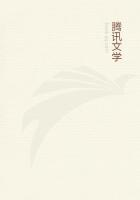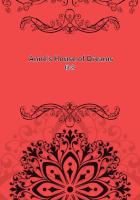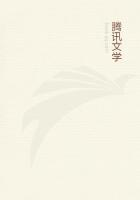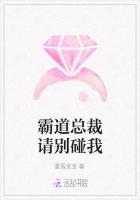If sure, make the point more prominent, or if not sure, erase it. I do not think the subject is quite new enough for the Linnean Society; but I dare say the 'Annals and Magazine of Natural History,' or "Gardeners' Chronicle"would gladly publish your observations, and it is a great pity they should be lost. If you like I would send your paper to either quarter with a note. In this case you must give a title, and your name, and perhaps it would be well to premise your remarks with a line of reference to my paper stating that you had observed independently and more fully.
I have read my own paper over after an interval of several years, and am amused at the caution with which I put the case that the final end was for crossing distinct individuals, of which I was then as fully convinced as now, but I knew that the doctrine would shock all botanists. Now the opinion is becoming familiar.
To see penetration of pollen-tubes is not difficult, but in most cases requires some practice with dissecting under a one-tenth of an inch focal distance single lens; and just at first this will seem to you extremely difficult.
What a capital observer you are--a first-rate Naturalist has been sacrificed, or partly sacrificed to Public life.
Believe me, yours very sincerely, CH. DARWIN.
P.S.--If you come across any large Salvia, look at it--the contrivance is admirable. It went to my heart to tell a man who came here a few weeks ago with splendid drawings and MS. on Salvia, that the work had been all done in Germany. (Dr. W. Ogle, the observer of the fertilisation of Salvia here alluded to, published his results in the 'Pop. Science Review,' 1869. He refers both gracefully and gratefully to his relationship with my father in the introduction to his translation of Kerner's 'Flowers and their Unbidden Guests.')[The following extract is from a letter, November 26th, 1868, to Sir Thomas Farrer, written as I learn from him, "in answer to a request for some advice as to the best modes of observation.""In my opinion the best plan is to go on working and ****** copious notes, without much thought of publication, and then if the results turn out striking publish them. It is my impression, but I do not feel sure that Iam right, that the best and most novel plan would be, instead of describing the means of fertilisation in particular plants, to investigate the part which certain structures play with all plants or throughout certain orders;for instance, the brush of hairs on the style, or the diadelphous condition of the stamens, in the Leguminosae, or the hairs within the corolla, etc. etc. Looking to your note, I think that this is perhaps the plan which you suggest.
"It is well to remember that Naturalists value observations far more than reasoning; therefore your conclusions should be as often as possible fortified by noticing how insects actually do the work."In 1869, Sir Thomas Farrer corresponded with my father on the fertilisation of Passiflora and of Tacsonia. He has given me his impressions of the correspondence:--"I had suggested that the elaborate series of chevaux-de-frise, by which the nectary of the common Passiflora is guarded, were specially calculated to protect the flower from the stiff-beaked humming birds which would not fertilise it, and to facilitate the access of the little proboscis of the humble bee, which would do so; whilst, on the other hand, the long pendent tube and flexible valve-like corona which retains the nectar of Tacsonia would shut out the bee, which would not, and admit the humming bird which would, fertilise that flower. The suggestion is very possibly worthless, and could only be verified or refuted by examination of flowers in the countries where they grow naturally...What interested me was to see that on this as on almost any other point of detailed observation, Mr. Darwin could always say, 'Yes; but at one time I made some observations myself on this particular point; and I think you will find, etc. etc.' That he should after years of interval remember that he had noticed the peculiar structure to which I was referring in the Passiflora princeps struck me at the time as very remarkable."With regard to the spread of a belief in the adaptation of flowers for cross-fertilisation, my father wrote to Mr. Bentham April 22, 1868:
"Most of the criticisms which I sometimes meet with in French works against the frequency of crossing, I am certain are the result of mere ignorance.
I have never hitherto found the rule to fail that when an author describes the structure of a flower as specially adapted for self-fertilisation, it is really adapted for crossing. The Fumariaceae offer a good instance of this, and Treviranus threw this order in my teeth; but in Corydalis, Hildebrand shows how utterly false the idea of self-fertilisation is. This author's paper on Salvia is really worth reading, and I have observed some species, and know that he is accurate."The next letter refers to Professor Hildebrand's paper on Corydalis, published in the 'Proc. Internat. Hort. Congress,' London, 1866, and in Pringsheim's 'Jahrbucher,' volume v. The memoir on Salvia alluded to is contained in the previous volume of the same Journal:]
CHARLES DARWIN TO F. HILDEBRAND. (Professor of Botany at Freiburg.)Down, May 16 [1866].
My dear Sir, The state of my health prevents my attending the Hort. Congress; but Iforwarded yesterday your paper to the secretary, and if they are not overwhelmed with papers, yours will be gladly received. I have made many observations on the Fumariaceae, and convinced myself that they were adapted for insect agency; but I never observed anything nearly so curious as your most interesting facts. I hope you will repeat your experiments on the Corydalis on a larger scale, and especially on several distinct plants;for your plant might have been individually peculiar, like certain individual plants of Lobelia, etc., described by Gartner, and of Passiflora and Orchids described by Mr. Scott...














